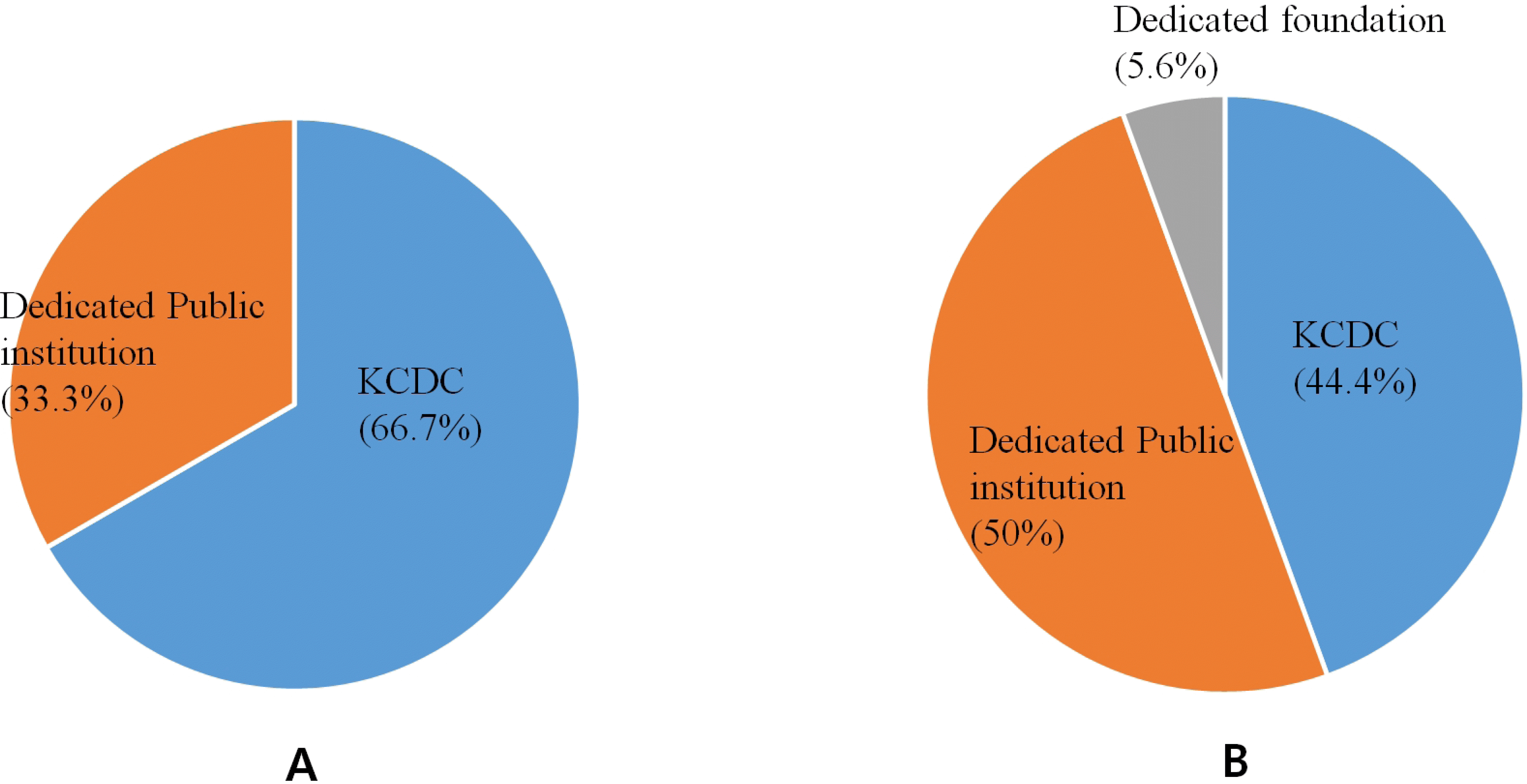Introduction
Materials and Methods
Results
1. 국가별 의료관련감염 감시체계 운영방식
Table 1
| Country | Per capita GDP (USD) | Name | Start year | Operation | Funding | Category | Annual finance (USD, year) | Number of participating institutions(year) | Data collection | Data validation | Annual report | Disclosure of data from indivisual institutions | Ref. |
|---|---|---|---|---|---|---|---|---|---|---|---|---|---|
| Rep. of Korea | 31,430 | KONIS | 2006 | KOSHIC | KCDC | Cooperation of Government with private institution | 350,000 (2018) | ICU-227 SSI-215 (2018) | Web | ○ | ○ | × | 8,13,14 |
| Unites States | 65,110 | NHSN | 2005* | CDC | HHS | Government operation | 21,000,000 (2018) | 23,000 (2018) | Web | ○ | ○ | ○ | 15-19 |
| Canada | 46,210 | CNISP | 1994 | IPAC | Health Canada | Cooperation of Government with private institution | 1,600,000 (2017) | 65 (2017) | ? | ? | × | ? | 20,21 |
| Japan | 40.850 | JANIS | 2000 | MHLW | MHLW | Government operation | 600,000 (2017) | 2,260 (2019) | Web | ? | ○ | ? | 22,23 |
| Twian | 24,830 | TNIS | 2007 | CDC | CDC | Government operation | ? | 84 (2016) | Web | ? | ○ | ? | 24 |
| European Union | HAI-Net |
1994 2008 |
ECDC | ECDC | Government operation | 1,500,000 (2019) | ICU-1192, SSI-1639 (2017) | Web | ○ | ○ | ? | 25-27 | |
| United Kingdom | 41,030 | NINSS SSISS | 1996 | DHSC | DHSC | Government operation | ? | NINSS -178 (2003) SSISS-:201 (2018) | Web | ○ | ○ | × | 28,29 |
| Germany | 46,560 | KISS | 1996 | RKI‡ | ? | Government operation | ? | > 1,403 (2013) | Web | ○ | × | × | 30,31 |
| France | 41,760 | Repias | 2017† | Cpias | ? | Government operation | ? | Mandatory | Web | ? | ? | ? | 32,33 |
| The third World | - | INICC | 1998 | Private consortium | ? | Private institutions operation | ? | 2,000 (2019) | Web | ? | × | × | 34 |
Abbreviations: KOSHIC, Korean Society for Healthcare-associated Infection Control and Prevention; KCDC, Korean Centers for Diseases Control and Prevention; KONIS, Korean National Healthcare-associated Infections Surveillance System; NHSN, National Healthcare Safety Network; CDC, Centers for Diseases Control and Preventions; HHS, Department of Health and Human Services; IPAC, Infection Prevention and Control Candada; CNISP, Canadian Nosocomial Infection Surveillance Program; JANIS, Japan Nosocomial Infection Surveillance; MHLW, Ministry of Health, Labor and Welfare; TNIS, Tawian Nosocomial Infection Surveillance; HAI-Net, Healthcare-assoicated Infection Surveillance Network; ECDC, European Centers for Disease Control and Prevention; NINSS, Nosocomial Infection National Surveillance Service; SSISS, Surgical Site Infection Surveillance Service; DHSC, Department of Helath and Social Care; KISS, Krankenhaus Infecktions Surveillance System; INICC, International Nosocomial Infection Control Consortium; RKI, Robert Koch institute; ICU, intensive care unit; SSI, surgical site infection.
2. 향후 운영 방식에 대한 전문가 델파이 설문 결과
 | Fig. 1Results of Delphi survey on essential factors of operating system for national healthcare-associated infection surveillance. (A) The choice of the first priority. (B) Composition of choices of the first and secondary priority. (C) Composition of choices from the first to third priority. |
Table 2
 | Fig. 2Results of Delphi survey on preference of operating systems for the Korean National Healthcare-associated Infections Surveillance System. (A) The choice of the first priority. (B) Composition of choices of the first and secondary priority.
Abbreviation: KCDC, Korea Center for Disease Control and Prevention.
|




 PDF
PDF Citation
Citation Print
Print



 XML Download
XML Download